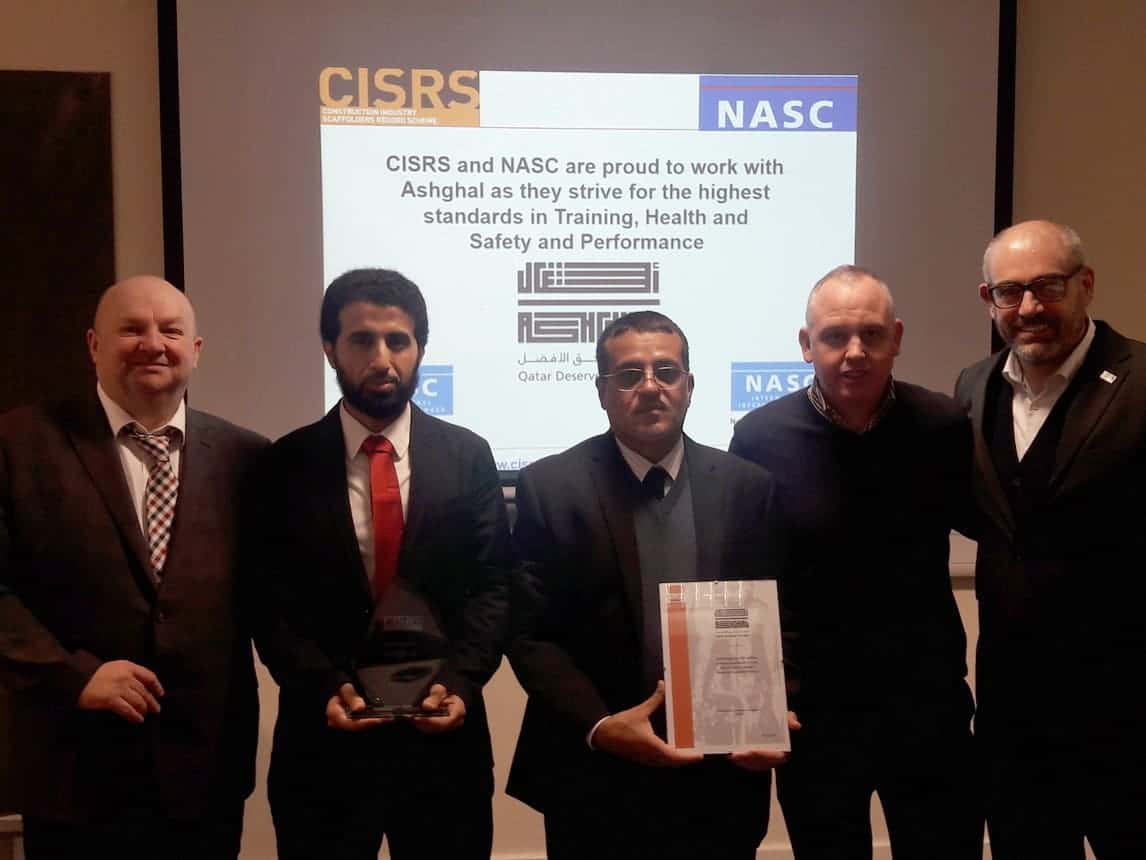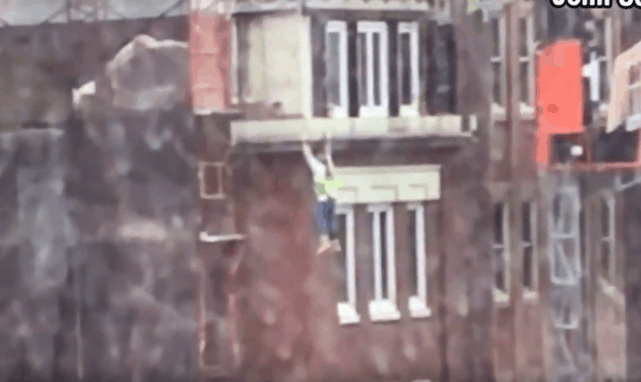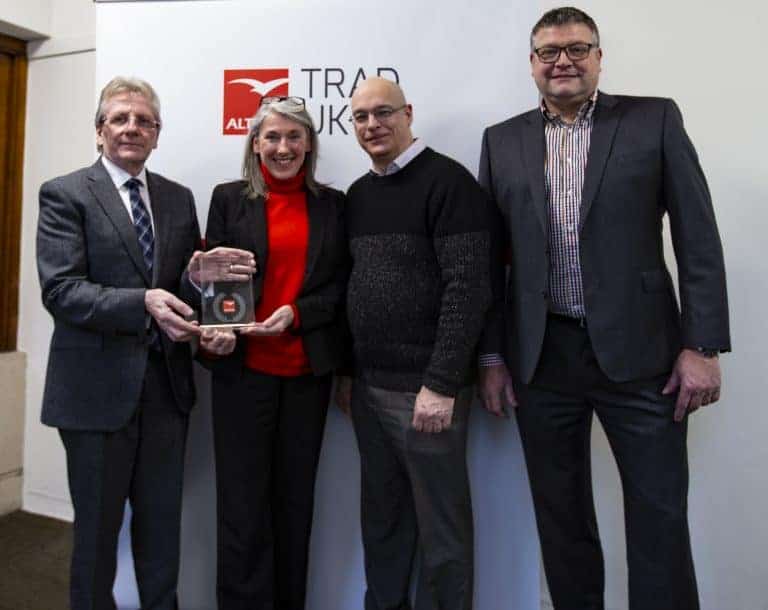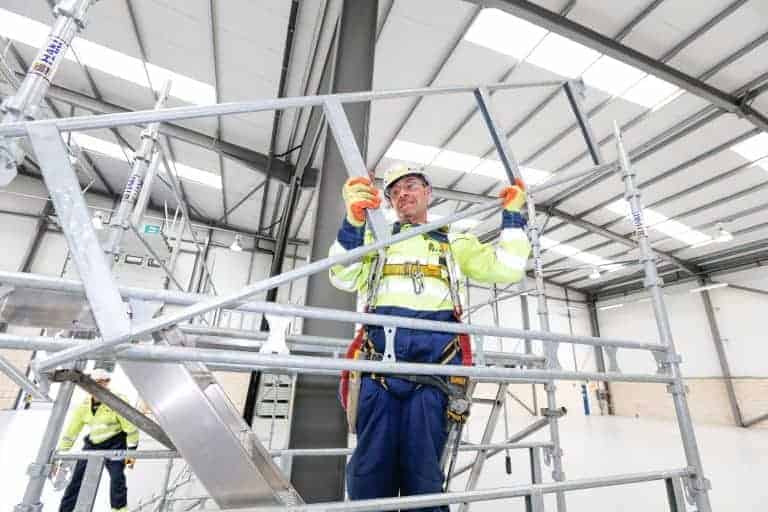Cottam power station to close
The coal-fired power station near Retford in North Nottinghamshire is set to close.
The power station that has been in operation for more than 50 years, will close on 30 September under EDF Energy plans. 150 jobs are now at risk. The company has said that the decision to close the plant “reflects the challenging market conditions over the last few years and the context of the drive to decarbonise electricity generation.” Cottam Power plant manager Andy Powell said: “When the power station was built it was designed to operate for 30 years. “It’s a credit to our people, the engineering and EDF Energy’s investment that it has operated for more than 50 years. “There has been an aspiration to move away from coal for a long time now and we have prepared thoroughly for the closure. “We have a highly skilled and experienced workforce and we’re determined to support our people throughout this process. “Today 158 people working at Cottam are in scope. During 2017 we supported 19 people to move into alternative roles within EDF Energy, and an additional 22 will be transferring into alternative roles over the coming months. “We are conscious of the need to support a just transition to a low carbon energy system. Our ambition is to close the station safely and responsibly by managing people and the environment properly and continuing to be a good neighbour.”Review: Dickies Cameron Safety Boot
System scaffolding training to feature heavily at East London centre
The former CITB’s National Construction college in Leytonstone, East London, has announced that system scaffolding training will feature heavily at the new centre.
Simian who recently secured the running of the Leytonstone College will be joining forces with Dudley College of Technology to promote Modern Methods of Construction (MMC). With the aim of expanding system scaffolding training in the area, the College is offering the training with a significant emphasis on the Layher System. The Layher scaffolding system is widely regarded as carrying the benchmark for quality and are the worlds largest supplier of system scaffolding boasting a huge, high-quality product range. During the launch of the takeover, Simian’s Managing Director, Simon Hughes, said: “We’re really excited to get the first of our proposed new centers up and running. The first few days have been a touch hectic, but we’ve started to get our teeth into planning for the future and significantly increasing the portfolio of CISRS Scaffolding training on offer in London.” Sean Pike, Managing Director of Layher UK was also in attendance at the launch and commented: “We’re really pleased to support Simian and Dudley College in their drive to promote the use of innovation in construction are delighted that the Leytonstone Centre offers a local training opportunity for our clients in and around the South East. We are extremely confident of the quality, safety and time benefits that our products bring, and it can only be seen as a positive that these benefits are now available to a wider audience.” Simon Hughes added, “The provision of Layher training that will include CISRS System Scaffold Product Training Scheme (SSPTS) and full Layher part one and part two courses is very high on our agenda, as we push to promote modern methods of construction in the capital, using what is widely regarded as being one of the best scaffolding systems on the market, and they will be able to book through our website very soon! We’re also keen to integrate technology into scaffold training, in much the same way that our partners, Dudley College of Technology, who will be running the construction training element of the Leytonstone site, have done at their Advance Centre in the Midlands.”Qatari government backs CISRS OSTS
CISRS have announced that the Qatari government has placed an insistence for CISRS-trained operatives in all its major construction project scaffolding tenders.
The procurement announcement was made by representatives from Ashghal, the department responsible for overseeing large-scale infrastructure, buildings and public utility developments across the country, during a visit to London. Ashghal safety officials met with officials from CISRS and Simian Risk at the training provider’s scaffolding training centre in Waltham Forest, formerly operated by NCC. Following a tour of the facility, CISRS Scheme Manager David Mosley gave a short presentation into the history of CISRS in the UK and the creation and ongoing expansion of the Overseas Scaffolders Training Scheme (OSTS). The benefits of OSTS training – with increased labour skills leading to increases in safety standards and productivity – and the recent establishment of two CISRS OSTS centres in Qatar were then discussed. David Mosley, CISRS Scheme Manager, said: “I welcome Ashghal’s announcement, which will encourage more scaffolders to undergo certified OSTS scaffolding training and lead to greater safety standards, improved knowledge and skill levels on sites throughout Qatar. “It was great to hear that safety is such a key driver for Ashghal, as evidenced in their achievement of passing 100 million hours without Lost Time Injury for infrastructure (roads/drainage) projects. We were pleased to present them with a trophy and certificate in recognition of this milestone and listen to their plans to implement new policies and forge new partnerships to build on this.
“We are delighted that more and more overseas organisations are recognising the value of CISRS OSTS, which is now provided at 15 centres worldwide including facilities in Nepal, China, Nigeria and Saudi Arabia.”
Ian Fyall, Partner at Simian Risk, said: “We were delighted to welcome Ashghal to our new training centre and explain how we’re delivering a variety of CISRS scaffolding courses at various locations in the UK as well as CISRS OSTS courses with local partners in Africa, India, China and the Middle East.”
“It was great to hear that safety is such a key driver for Ashghal, as evidenced in their achievement of passing 100 million hours without Lost Time Injury for infrastructure (roads/drainage) projects. We were pleased to present them with a trophy and certificate in recognition of this milestone and listen to their plans to implement new policies and forge new partnerships to build on this.
“We are delighted that more and more overseas organisations are recognising the value of CISRS OSTS, which is now provided at 15 centres worldwide including facilities in Nepal, China, Nigeria and Saudi Arabia.”
Ian Fyall, Partner at Simian Risk, said: “We were delighted to welcome Ashghal to our new training centre and explain how we’re delivering a variety of CISRS scaffolding courses at various locations in the UK as well as CISRS OSTS courses with local partners in Africa, India, China and the Middle East.”
New Technology To Revolutionise UK Construction
A whopping £18 million in funding from United Kingdom Research and Innovation is set to revolutionise the construction industry through new technology.
With this in mind, four new research projects aiming to speed up assembly, save money, and improve the quality of UK building projects have been announced by the cutting edge group. They Include: Manufacturing integrated building components using digital hybrid Concrete Printing (HCP) technology. This project utilizes 3D Concrete Printing to create an object slightly larger than the desired object or near net shape. It then uses subtractive processes including cutting, milling and drilling, to remove a small amount of material in creating the net-shape to sub-millimetre precision. HCP technology will enable the intelligent integration of building performance and energy production and storage technologies, freed from traditional constraints on form and finish. Applied Off-site and On-site Collective Multi-Robot Autonomous Building Manufacturing. An innovative multi-agent control framework will enable a team of robots to operate in a similar way to how social insects, such as termites, work. They will collectively design and build structures of substantial scale and complexity, by quickly and efficiently organising themselves. Automating Concrete Construction. A move to dramatically improve whole life construction sector sustainability and productivity. This will be done by creating a culture taking a fresh, holistic approach to the manufacture, assembly, reuse, and deconstruction of concrete buildings, leading to a healthier, safer, built environment. Integrating Conversational AI and Augmented Reality with BIM for faster and collaborative on-site Construction Assemblage. The challenge is to utilise Augmented Reality (AR) providing visual support to access BIM systems and installation guides, without obstructing or distracting the view of on-site workers. This project will exploit advanced AI, computer visions, and AR technologies to develop an end-to-end BIM solution to support on-site assembly operations. In addition to boosting the productivity of front-line assembly workers, it seeks to eliminate the tedious process of coordinating on-site activities which often involve multiple workers and machinery.
Meeting New Challenges
The new £5 million Research Leaders programme will develop innovative solutions to transform the construction industry and deliver, better performing homes, better jobs and better value for taxpayers as part of the Industrial Strategy. In addition, UKRI announced £13.3 million, to fund 24 collaborative research and development projects, delivered by Innovate UK, in the construction sector addressing the three core aims of the Transforming Construction challenge programme. Sam Stacey, Director of the Transforming Construction Challenge, said: “These Research Leaders and Collaborative Research and Development grants are funded by the Industrial Strategy Challenge Fund and play a key role in advancing the transformation across the sector. They will help the construction industry work directly with talented researchers to explore new ways of working in construction that will speed up assembly, save money, and improve the quality of building projects.” Construction Minister, Richard Harrington, was keen to point out: “The use of Artificial Intelligence, digital techniques and off-site manufacturing, help us harness new methods of working. This delivers on the Government’s Construction Sector Deal which pledges to build better performing buildings, using less energy and providing better value for taxpayers. “These new methods to help the construction industry are a testament to the Government’s modern Industrial Strategy’s aims of building a better tomorrow for us all through scientific and technological advances.”Futuristic Opportunities
Professor Sir Mark Walport, UKRI Chief Executive, added: “Technologies being developed in the UK provide a significant opportunity to transform the way we build, such as the use of augmented reality to improve design or robotics to aid complex building assembly. “Through projects such as these, the Industrial Strategy Challenge Fund allows us to catalyse innovation across the UK’s vital construction industry improving productivity, sustainability and safety.” A range of impressive project partners are involved in the projects including Loughborough, Cambridge, Sheffield, Bath, Dundee and West of England university’s, along with Imperial College London. Other well-known names include, KUKA Robotics UK Limited, Cundall Johnston & Partners, Laing O’Rourke plc, Geo Green Power and many more. Delivery of the funding is led by UKRI through the Engineering and Physical Sciences Research Council (EPSRC) and Innovate UK, under the Industrial Strategy Challenge Fund’s Transforming Construction Challenge.TRAD make donation to Lighthouse Charity following win at Altrad President’s Safety Awards
TRAD UK proudly received the Best Team Contribution Award at the inaugural Altrad President’s Awards for Safety Ceremony in Montpellier at the end of 2018.
The Safety Award was in recognition of TRAD’s significant contribution towards improving safety within their own business and the wider construction industry. As winner’s of the prestigious award, TRAD have received £1,000 to donate to a charity of their choice.
TRAD UK has said they will double this amount, so the well deserved Lighthouse Club Charity, as chosen by TRAD UK CEO Des Moore, will receive £2,000.
The Lighthouse Club’s primary purpose is to provide financial and emotional support to construction workers and their families who have suffered hardship as a consequence of accident, illness or bereavement. They receive no public funding and rely on the generosity of those within the industry to help them continue their vital work.
At the NASC Annual Ball & Awards in November 2018, the Lighthouse Club received a huge donation of £30,000, which was generously raised by members of NASC, of which Des Moore is currently President. This donation was an initiative of Des Moore and TRAD UK, and as a result of this substantial contribution, the NASC has been placed on the Lighthouse Club Charity’s Wall of Fame.

It is thanks to generosity like this from the construction industry that the Lighthouse Club can develop their Building Mental Health programme. They have recently launched their Construction Industry Helpline App, which complements their existing 24/7 Helpline. Through the app, users can find out more information how about they can help themselves and take the next step in seeking professional help. TRAD’s more than 1,000 staff have adopted the use of this free mental health app, which will prove vital to those who feel they have nowhere else to turn. Two construction workers take their own life every single working day and stress, anxiety and depression accounts for a fifth of all work-related illness.
TRAD recognise the importance of driving the change in the construction industry towards mental health and wellbeing support. In 2018, TRAD signed the Time for Change Pledge and implemented a specific action plan to support the mental health and wellbeing of the Group’s 1,000 employees. A guidance booklet was distributed to all employees, which included information, support and advice and TRAD are currently in the process of training nominated mental health champions, who will encourage understanding and openness of mental health issues amongst all employees and offer support and guidance.
Des Moore comments, “At TRAD we are doing all we can to break down mental health stigma and support our employees’ mental health and wellbeing in an open and supportive way.”











